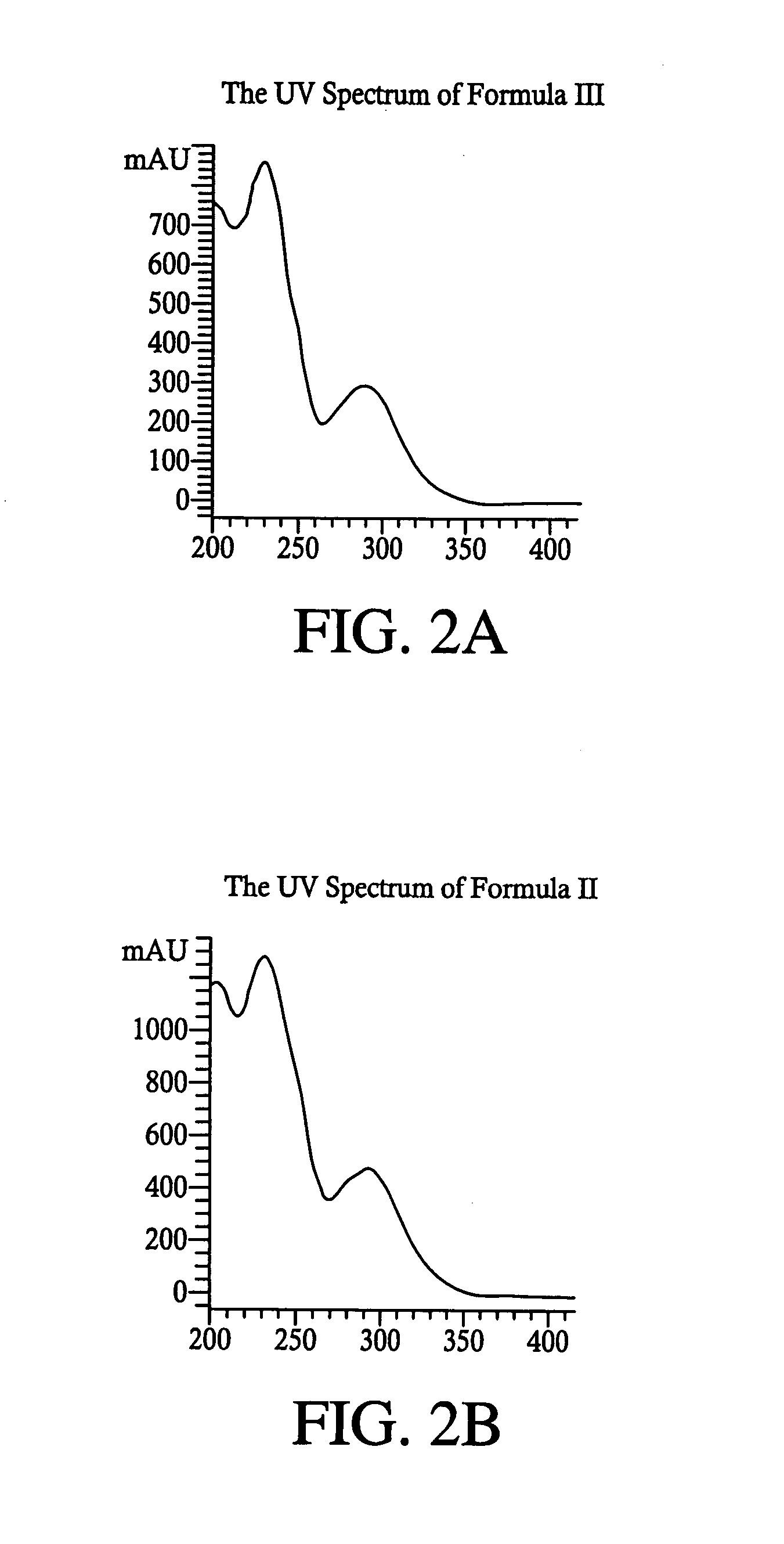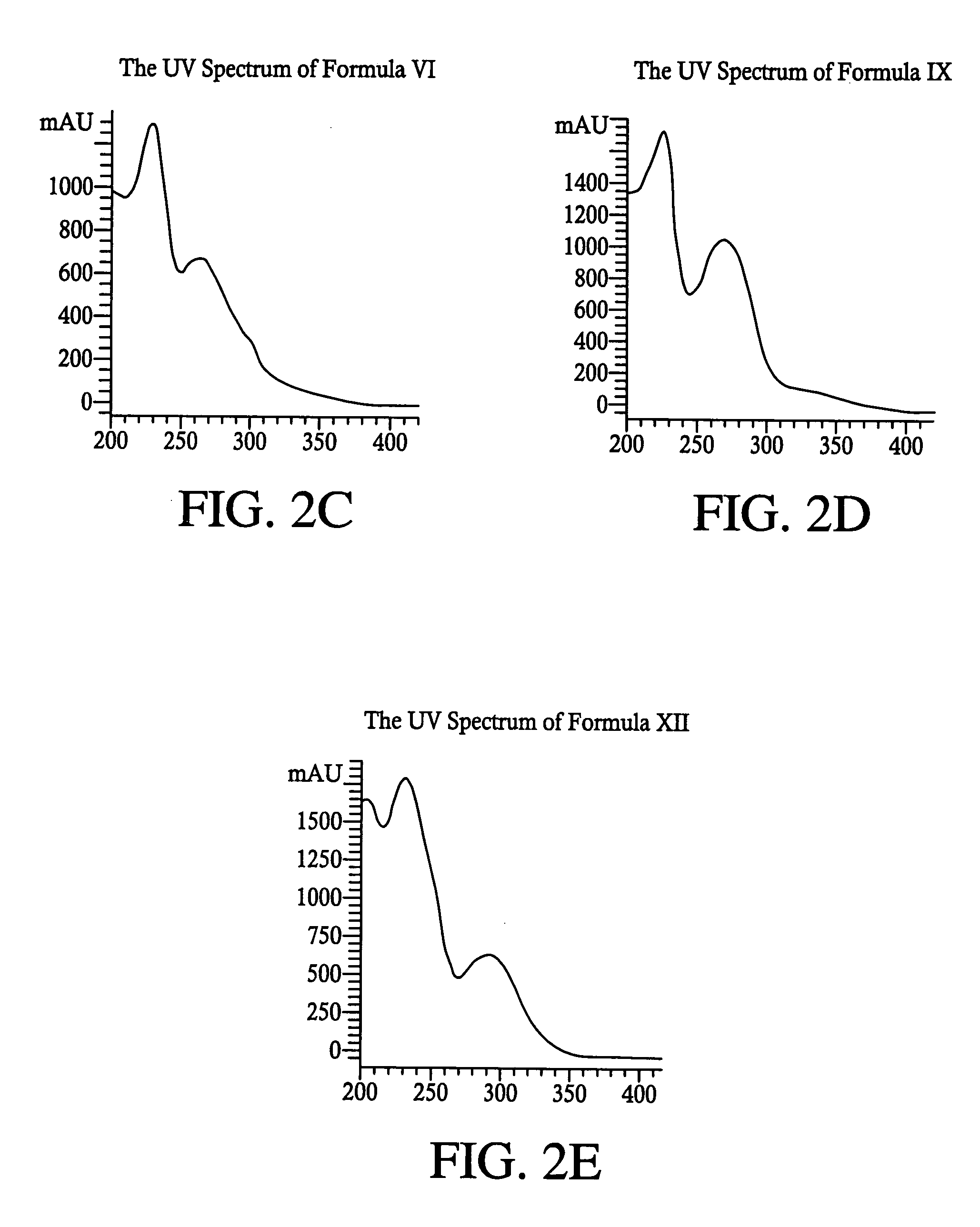Bis-indole pyrroles useful as antimicrobials agents
a technology of pyrroles and bisindole, which is applied in the field of chemistry and medicine, can solve the problems of large ocean complexity, cost and commercial availability of antimicrobial compounds,
- Summary
- Abstract
- Description
- Claims
- Application Information
AI Technical Summary
Benefits of technology
Problems solved by technology
Method used
Image
Examples
example 1
Production of Compounds of Formulae II, III, IV, VI and XI
[0340]Fermentation. Strain NPS012745 was grown in a 40 ml tube containing 10 ml of vegetative medium consisting of the following per liter of sea water: starch, 10 g; yeast extract, 4 g; and peptone, 2 g. The culture was allowed to incubate for 3 days at 28 degrees C. on a rotary shaker operating at 250 rpm. The vegetative culture was mixed with 2 ml of cryoprotective solution consisting of 500 g glycerol per liter of deionized water. 1.5 ml portions of this mixture were transferred to sterile cryogenic tube (2 ml capacity). The vegetative cultures so obtained were frozen and stored at −80 degrees C.
[0341]Seed culture for the production of NPS012745 compounds was prepared by transferring 1.5 ml of the cryopreservative culture to a 40 ml tube containing 10 ml of sterile vegetative medium having the same composition as the above. The seed culture was incubated at 28 degrees C. for 3 days on a rotary shaker operating at 250 rpm...
example 2
Production of De-Chlorinated NPS012745 Compound of Formula IX
[0353]Fermentation. Seed culture of strain NPS012745 was prepared by transferring 1.5 ml of the cryopreservative culture to a 40 ml tube containing 10 ml of sterile vegetative medium consisting of the following per liter of sea water: starch, 10 g; yeast extract, 4 g; and peptone, 2 g. The seed culture was incubated at 28 degrees C. for 3 days on a rotary shaker operating at 250 rpm. Five ml of this seed culture was inoculated into 500 ml flask containing 100 ml of the vegetative medium. The second seed culture was incubated at 28 degrees C. for 2 days on a rotary shaker operating at 250 rpm. Five ml each of the second seed culture was inoculated into 500 ml flask containing 100 ml of the production medium consisting of the following per liter of deionized water: starch, 10 g; yeast extract, 4 g; and peptone, 2 g. The production culture was incubated at 28 degrees C. for 7 days on a rotary shaker operating at 250 rpm. The ...
example 3
Production of Fluorinated NPS012745 Compounds
[0356]Seed culture of strain NPS012745 was prepared by transferring 1.5 ml of the cryopreservative culture to a 40 ml tube containing 10 ml of sterile vegetative medium consisting of the following per liter of sea water: starch, 10 g; yeast extract, 4 g; and peptone, 2 g. The seed culture was incubated at 28 degrees C. for 3 days on a rotary shaker operating at 250 rpm. Five ml of this seed culture was inoculated into 500 ml flask containing 100 ml of the vegetative medium. The second seed culture was incubated at 28 degrees C. for 2 days on a rotary shaker operating at 250 rpm. Five ml each of the second seed culture was inoculated into 500 ml flask containing 100 ml of the production medium consisting of the following per liter of deionized water: starch, 10 g; yeast extract, 4 g; peptone, 2 g and synthetic sea salt (Instant Ocean, Aquarium Systems), 30 g. The production culture was incubated at 28 degrees C. for 2 days on ...
PUM
| Property | Measurement | Unit |
|---|---|---|
| pH | aaaaa | aaaaa |
| concentration | aaaaa | aaaaa |
| flow rate | aaaaa | aaaaa |
Abstract
Description
Claims
Application Information
 Login to View More
Login to View More - R&D
- Intellectual Property
- Life Sciences
- Materials
- Tech Scout
- Unparalleled Data Quality
- Higher Quality Content
- 60% Fewer Hallucinations
Browse by: Latest US Patents, China's latest patents, Technical Efficacy Thesaurus, Application Domain, Technology Topic, Popular Technical Reports.
© 2025 PatSnap. All rights reserved.Legal|Privacy policy|Modern Slavery Act Transparency Statement|Sitemap|About US| Contact US: help@patsnap.com



